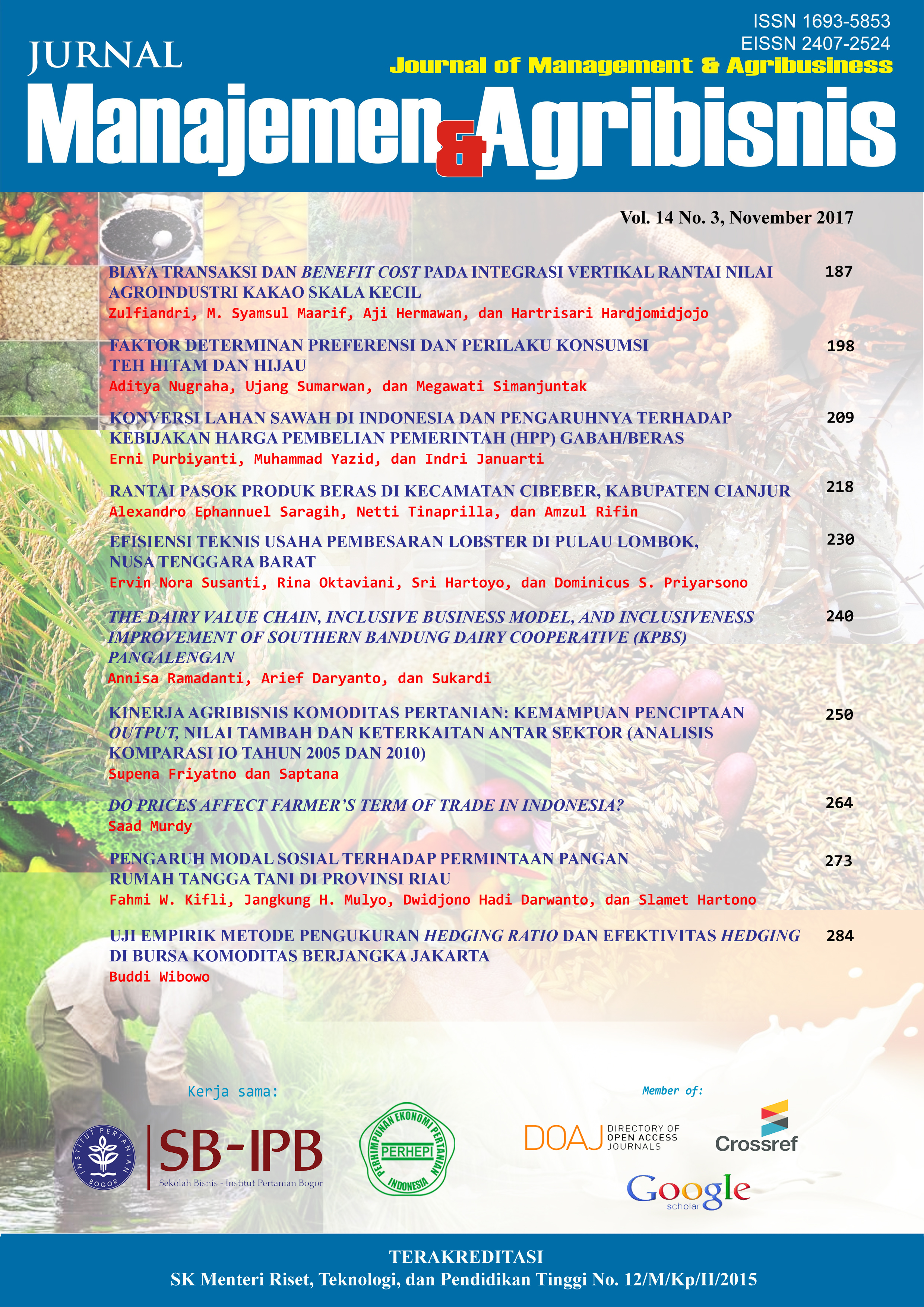Uji Empirik Metode Pengukuran Hedging Ratio dan Efektivitas Hedging di Bursa Komoditas Berjangka Jakarta
Abstract
Hedging strategies in the commodity futures market is strongly influenced by the estimation method of hedge ratio. This study examines the effectiveness of hedging strategy against cash position in Indonesia’s palm oil spot market using three hedge ratio estimation methods: OLS, Vector Error Correction Model, and Threshold-ARCH. The results show the hedging effectiveness in the Jakarta Futures Exchange is considerably highly effective to reduce the impact of fluctuations of spot price. The effectiveness of hedging strategy using OLS as the simplest method is close to VECM method and TARCH. The effectiveness of hedging strategy using OLS hedge ratio provides an opportunity for market player in implementing hedging strategy in Jakarta Futures Exchange due to its simplicity in estimation procedure
Keywords: hedge ratio, hedging effectiveness, OLS, VECM, TARCH
Authors
Authors who publish with this journal agree to the following terms:
- Authors retain copyright and grant the journal right of first publication with the work simultaneously licensed under a Creative Commons Attribution License that allows others to share the work with an acknowledgement of the work's authorship and initial publication in this journal.
- Authors are able to enter into separate, additional contractual arrangements for the non-exclusive distribution of the journal's published version of the work (e.g., post it to an institutional repository or publish it in a book), with an acknowledgement of its initial publication in this journal.
- Authors are permitted and encouraged to post their work online (e.g., in institutional repositories or on their website) prior to and during the submission process, as it can lead to productive exchanges, as well as earlier and greater citation of published work (See The Effect of Open Access).

